Heroes - Lives to Learn From
November
Gratitude Wonder Stewardship
November
Gratitude Wonder Stewardship
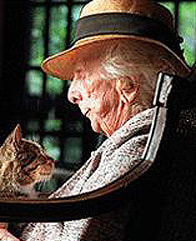
Stewardship - Marjory Stoneman Douglas (1890-1998)
Marjory Stoneman Douglas was a champion of the environment decades before pioneer environmentalist Rachel Carson began her work. A Wellesley graduate (1912) and prolific writer, this Miami-based journalist devoted much of her long life to conservation of Florida's Everglades. In the early 1900s many considered the Everglades worthless swampland that should be drained and commercially developed. That was until Marjorie published her 1947 classic The Everglades: River of Grass. An overnight best seller, it was a call to action for preserving this natural wonder with its intricate web of ecosystems. Fed by the freshwater Biscayne Aquifer, the area literally is "a river of grass," and Douglas's lead line "There are no other Everglades in the world," says it all. Her powerful prose spawned one of the most fruitful environmental rescues in American history, leading to the formation and expansion of Everglades National Park, the largest subtropical wilderness in the US, and a birding, boating, and wildlife sanctuary. Stoneman Douglas herself chaired the Friends of the Everglades for the last thirty years of her life. Her writing and work never ceased to inspire gratitude and wonder.
We remember Marjory this month for her stewardship of the environment, but she overcame a difficult childhood and in her 108 years of life, embraced and advocated for many causes ranging from woman's suffrage to refugee assistance (after serving in the Red Cross in World War I), civil rights, and convict's rights. She was awarded the Presidential Medal of Freedom in 1993 at age 103, and posthumously inducted into the National Wildlife Federation Hall of Fame and the National Women's Hall of Fame.
Photo: CC-BY-SA 3.0 (Friends of the Everglades)
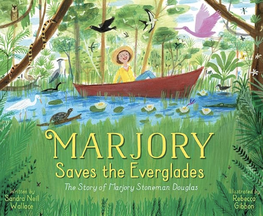
Marjory Saves the Everglades. Sandra Neil Wallace. Illustrated by Rebecca Gibbon. Simon & Schuster/Paula Wiseman Books, 2020. (K-3) Wonder, Stewardship.
When Marjory Stoneman Douglas returned to Florida after serving in the Red Cross, she was dismayed to find that the beautiful birds, trees, and orchids of the Everglades were being destroyed. Her journey to protect them, and eventually see that they became a national park, is told in this book. Includes a timeline of events at the end. 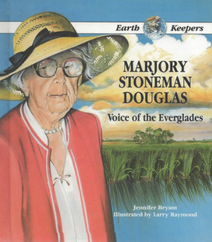
Marjory Stoneman Douglas: Voice of the Everglades. Nelson Bryant. Twenty First Century Books, 1991. (4-6) Wonder, Stewardship.
Marjory Stoneman Douglas was known as the "Grandmother of the Glades" because of her work to preserve the Everglades. A thorough narrative of Douglas' life, with many details about the ecology of her beloved Everglades. |
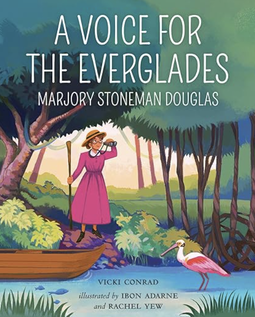
A Voice for the Everglades: Marjory Stoneman Douglas. Vicki Conrad. Illustrated by Ibon Adarne and Rachel Yew. Albert Whitman & Company, 2021. (K-4) Wonder, Stewardship.
This brightly-illustrated picture book emphasizes the natural beauty and wonder of the Everglades and captures the boldness and conviction of its heroine. "Every plant and animal needs another to survive. And the Everglades needed Marjory." Part of the "She Made History" series about notable women. 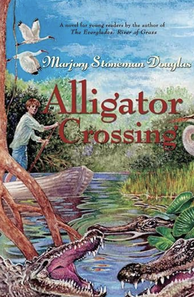
Alligator Crossing. Marjory Stoneman Douglas. Milkweed Editions, 2003. (4-6) Wonder, Stewardship, Courage.
A slim children's novel by Marjory Stoneman Douglas herself! This is the story of Henry Bunks, who has a secret refuge near the canal in the city where he escapes his difficult family life and street gangs. One day he stows away on the boat of an alligator hunter, and little does he know the revelations of natural beauty, as well as moral challenges, that he will face. |
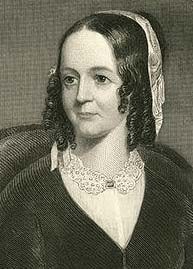
Gratitude - Sarah Buell Hale (1788 -1879)
Writer, poet, and America’s first woman editor, Sarah Buell Hale is largely responsible for the celebration of Thanksgiving as a national holiday. The holiday had been celebrated sporadically in different states through the early 1800s and occasionally individual presidents declared a specific day of Thanksgiving. But it was Mrs. Hale’s tireless campaign to make it a national holiday that bore fruit under the administration of Abraham Lincoln during the most trying period of American History, the Civil War.
Sarah Hale’s own story was extraordinary. A native of New Hampshire, she was the mother of five children when she was widowed in 1822. To support her large family, she put quill to paper and began writing poetry, fiction, and non-fiction. Her first book of original Poems for Our Children was published in 1830 (and included her still popular “Mary Had a Little Lamb”). Sarah’s talents caught the eye of Reverend John Blake of Boston, who was publishing a popular monthly Ladies Magazine that he himself edited. Blake was bold enough to ask Sarah to take over as editor (there were no women editors in the United States). She moved to Boston and proceeded to boost circulation. When Louis Godey bought Rev. Blake’s magazine in 1837, he asked Sarah to stay on as editor. Mrs. Hale presided as editor (or “editress” as she preferred) of the influential Godey’s Lady’s Book from 1837 to 1877 – recommending books, authors, fashions, and social causes (ranging from the education of women to the restoration of historic sites). She furthered the careers of major American writers by publishing literary essays by Washington Irving, Nathaniel Hawthorne, Edgar Allen Poe, and Oliver Wendell Holmes.
Sarah Buell Hale thought a national Thanksgiving would be a source of unity for all Americans, as well as a means of acknowledging the blessings of a bountiful land of liberty. She pounded Presidents Taylor, Fillmore, Pierce, and Buchanan with letters urging the establishment of a national Thanksgiving holiday, as a way of encouraging both gratitude and unity. They ignored her. Abraham Lincoln did not. When he received her letter in September 1863, just months after the carnage at Gettysburg, Lincoln saw the wisdom of her suggestion, and proclaimed the last Thursday in November an annual holiday.
A splendid children’s book on Sarah Hale has not yet been written. But teachers and children will find her extraordinary life and efforts profiled in three accounts. The former is lively but light. The latter is more substantive.
Writer, poet, and America’s first woman editor, Sarah Buell Hale is largely responsible for the celebration of Thanksgiving as a national holiday. The holiday had been celebrated sporadically in different states through the early 1800s and occasionally individual presidents declared a specific day of Thanksgiving. But it was Mrs. Hale’s tireless campaign to make it a national holiday that bore fruit under the administration of Abraham Lincoln during the most trying period of American History, the Civil War.
Sarah Hale’s own story was extraordinary. A native of New Hampshire, she was the mother of five children when she was widowed in 1822. To support her large family, she put quill to paper and began writing poetry, fiction, and non-fiction. Her first book of original Poems for Our Children was published in 1830 (and included her still popular “Mary Had a Little Lamb”). Sarah’s talents caught the eye of Reverend John Blake of Boston, who was publishing a popular monthly Ladies Magazine that he himself edited. Blake was bold enough to ask Sarah to take over as editor (there were no women editors in the United States). She moved to Boston and proceeded to boost circulation. When Louis Godey bought Rev. Blake’s magazine in 1837, he asked Sarah to stay on as editor. Mrs. Hale presided as editor (or “editress” as she preferred) of the influential Godey’s Lady’s Book from 1837 to 1877 – recommending books, authors, fashions, and social causes (ranging from the education of women to the restoration of historic sites). She furthered the careers of major American writers by publishing literary essays by Washington Irving, Nathaniel Hawthorne, Edgar Allen Poe, and Oliver Wendell Holmes.
Sarah Buell Hale thought a national Thanksgiving would be a source of unity for all Americans, as well as a means of acknowledging the blessings of a bountiful land of liberty. She pounded Presidents Taylor, Fillmore, Pierce, and Buchanan with letters urging the establishment of a national Thanksgiving holiday, as a way of encouraging both gratitude and unity. They ignored her. Abraham Lincoln did not. When he received her letter in September 1863, just months after the carnage at Gettysburg, Lincoln saw the wisdom of her suggestion, and proclaimed the last Thursday in November an annual holiday.
A splendid children’s book on Sarah Hale has not yet been written. But teachers and children will find her extraordinary life and efforts profiled in three accounts. The former is lively but light. The latter is more substantive.
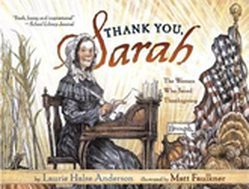
Thank You, Sarah: The Woman Who Saved Thanksgiving
Laurie Halse Anderson. Illustrated by Matt Faulkner. Simon and Schuster, 2005. (K-3) The bouncy “superheroine” approach in this picture book tends to portray Sarah Hale as a caricature of herself (she becomes a bit of a stubborn, willful, quill-wielding nag.) But young children will at least meet this noteworthy woman, and learn of her wide-ranging efforts. 
More than Petticoats: Remarkable New Hampshire Women Gail Underwood Parker.
Morris Book Publishing, 2009. pages 22-35. (4-6) A solid overview of her life in a readable twelve pages, but without illustrations. |
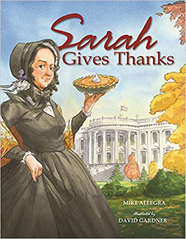
Sarah Gives Thanks. Mike Allegra. Illustrated by David Gardener. AV2, 2014. (2-3)
A prolific writer, editor and activist, Sarah Hale was unstoppable when she decided to pursue making Thanksgiving a national holiday. 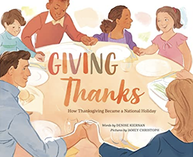
Giving Thanks: How Thanksgiving Became a National Holiday. Denise Kiernan. Illustrated by Jamey Christoph. Philomel Books 2022. (K-3)
A young child's introduction to the theme of gratitude and the feisty, can-do woman who brought it home as a national holiday for the U.S.A. |
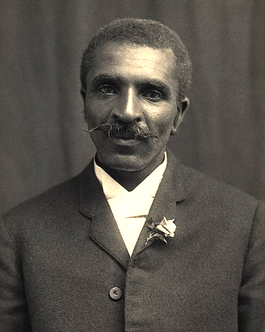
George Washington Carver 1864 - 1943
“Regard Nature. Revere Nature. Respect Nature.”
That was George Washington Carver's motto. A hero of stewardship, this extraordinary botanist, horticulturalist, artist, and professor of agricultural science researched and taught at both Iowa State and Tuskegee Institute. One biographer reminds us that “Carver sought to instill in his students the belief that it was in their best interest to treasure nature and not just take from it.”
Born into slavery in Missouri around 1864, George lost his mother at an early age. After emancipation, he and his brother James were raised by their former masters, Moses and Susan Carver, who instilled a love of learning in the boys, and George's appetite was insatiable. "Aunt Susan" taught him to read and write, and when he set off to school, he found that he knew more than his first teacher. His great thirst for knowledge led him from Missouri to Kansas to Iowa, where he was the first black student to enroll at Iowa State, earning both a Bachelor's and Master's degree. He then became Iowa State's first black professor. He acquired a vast knowledge of plants and he taught farmers how to plant crops that restored the soil. George was a man of incredible energy, talent, and generosity in sharing his knowledge. He inspires not only by his accomplishments but also by his habit of looking for a way to help in every situation. On his grave was written, "He could have added fortune to fame, but caring for neither, he found happiness and honor in being helpful to the world." We are fortunate to have MANY excellent children's biographies of this great man.
“Regard Nature. Revere Nature. Respect Nature.”
That was George Washington Carver's motto. A hero of stewardship, this extraordinary botanist, horticulturalist, artist, and professor of agricultural science researched and taught at both Iowa State and Tuskegee Institute. One biographer reminds us that “Carver sought to instill in his students the belief that it was in their best interest to treasure nature and not just take from it.”
Born into slavery in Missouri around 1864, George lost his mother at an early age. After emancipation, he and his brother James were raised by their former masters, Moses and Susan Carver, who instilled a love of learning in the boys, and George's appetite was insatiable. "Aunt Susan" taught him to read and write, and when he set off to school, he found that he knew more than his first teacher. His great thirst for knowledge led him from Missouri to Kansas to Iowa, where he was the first black student to enroll at Iowa State, earning both a Bachelor's and Master's degree. He then became Iowa State's first black professor. He acquired a vast knowledge of plants and he taught farmers how to plant crops that restored the soil. George was a man of incredible energy, talent, and generosity in sharing his knowledge. He inspires not only by his accomplishments but also by his habit of looking for a way to help in every situation. On his grave was written, "He could have added fortune to fame, but caring for neither, he found happiness and honor in being helpful to the world." We are fortunate to have MANY excellent children's biographies of this great man.
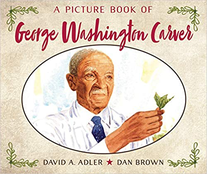
A Picture Book of George Washington Carver. David Adler. Illustrated by Dan Brown. Holiday House, 2000. (1-3) Stewardship

A Weed is a Flower. The Life of George Washington Carver. Aliki. Aladdin, 1988. (K-3) Orphaned, the son of slaves, lover of nature and insatiable learner, George Washington Carver led path-breaking research in agricultural science. His concern: how to restore the soil. A wonderful introduction to a man whose lifework was stewardship of the earth as a way of helping others. 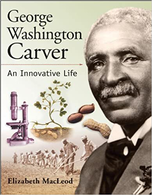
George Washington Carver. An Innovative Life Elizabeth MacLeod. Kids Can Press, 2007 (3-4)
This story of Carver’s life is interspersed with timelines and sidebars of the history of the era. This makes it easy to understand the important role George played in the lives of African American farmers of the south. 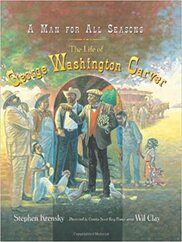
The Life of George Washington Carver. Stephen Krensky. Amistad, 2008. (2-4)
|
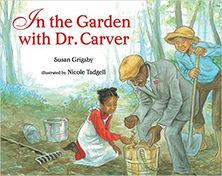
In the Garden with Dr. Carver. Susan Grigsby. Illustrated by Nicole Tadgell. Albert Whitman & Co, 2021. (K-3) Stewardship
In the early 1900’s George Washington Carver traveled around the south with a wagon equipped with plants, tools and seeds. He taught the local farmers how to enrich the soil and taught the schoolkids how to “listen to the plants” and how to use everything they could find to help their gardens grow. 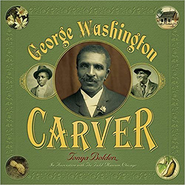
George Washington Carver. Tonya Bolden. Abrams Books, 2008. (2-6)
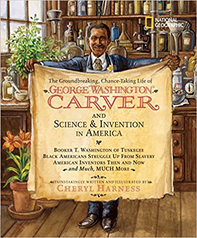
|
Wonder - Leonardo da Vinci (1452-1519)
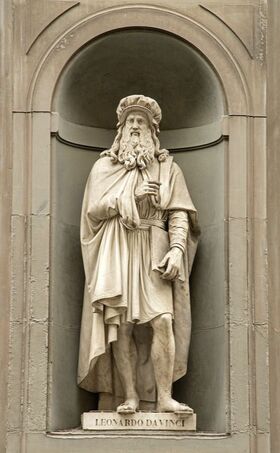
"To wonder is to stand in awe before the unexplained."
"Wonder is the first step on the path to knowledge."
Few human beings have embodied the intellectual and spiritual virtue of wonder more brilliantly than the original "Renaissance Man," Leonardo da Vinci. Renowned first as a painter, Leonardo was fascinated by almost everything about the natural world: the human body, light, air, movement, and how to render beauty and grace on canvas, bronze, or stucco. He received little formal education, but throughout his life, insatiable curiosity propelled him beyond art. Spellbound by the workings of nature and a born tinkerer, Da Vinci studied anatomy, mathematics, mechanics, and engineering, figuring out ways to channel the Arno river and coming up with designs for the first "flying machines" (based on the flight of birds), parachutes, steam cannons and more. While we can attribute much of his work to sheer genius, Da Vinci's was genius aided by his radical openness to the world around him, eagerness to understand, and delight in participating in the creative process. That's "wonder" at its best.
"Wonder is the first step on the path to knowledge."
Few human beings have embodied the intellectual and spiritual virtue of wonder more brilliantly than the original "Renaissance Man," Leonardo da Vinci. Renowned first as a painter, Leonardo was fascinated by almost everything about the natural world: the human body, light, air, movement, and how to render beauty and grace on canvas, bronze, or stucco. He received little formal education, but throughout his life, insatiable curiosity propelled him beyond art. Spellbound by the workings of nature and a born tinkerer, Da Vinci studied anatomy, mathematics, mechanics, and engineering, figuring out ways to channel the Arno river and coming up with designs for the first "flying machines" (based on the flight of birds), parachutes, steam cannons and more. While we can attribute much of his work to sheer genius, Da Vinci's was genius aided by his radical openness to the world around him, eagerness to understand, and delight in participating in the creative process. That's "wonder" at its best.
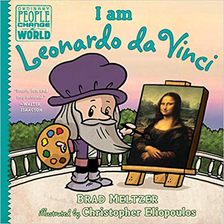
I am Leonardo da Vinci.
Brad Meltzer. Illustrated by Christopher Eliopoulos Dial Books, 2020. (K-3) A lighthearted first look at Da Vinci for the young, emphasizing the need to overcome fear of the unknown, and follow one's curiosity to unexpected results.Part graphic novel, part photos of Leonardo’s actual work, this book is infused with Leonardo’s philosophy of life and encourages everyone to wonder about everything! 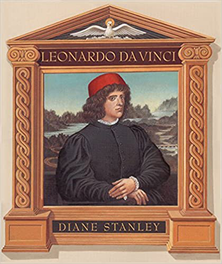
Leonardo da Vinci. Diane Stanley. Harper Collins, 2000. (4-6)
Another Diane Stanley triumph. This lengthier biography is the perfect circle read for older grades, especially fifth graders studying Leonardo as part of the Core Knowledge Renaissance unit. 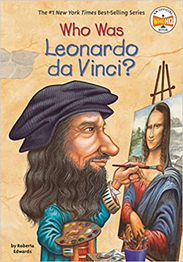
Who Was Leonardo da Vinci? Roberta Edwards. Illustrated by True Kelley. Penguin Workshop, 2005. (3-6) Chapter book. 112 pages.
Artist, scientist, inventor, Leonardo also had a hard time finishing things. This lively chapter book brings to life his flaws as well as his genius (perhaps overemphasizing them). Good additional background reading, but not a morning read-aloud. |
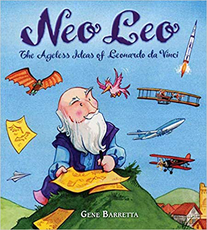
Neo Leo. The Ageless Ideas of Leonardo da Vinci Gene Barretta. Square Fish, 2016. (2-4)
Most people think of Leonardo as an artist, but he was also a visionary. This clever book, page by page, shows how inventions we might think of as new, were proposed by Leonardo many years ago. Showing his notes as he would write them (backwards) and sketches of his original ideas, readers marvel at his extensive interests and ideas. A bibliography in the back encourages further reading and research. 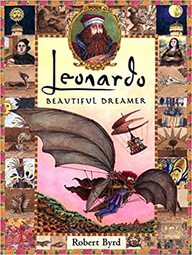
Leonardo Beautiful Dreamer. Robert Byrd. Dutton Children's Books, 2003. (4-6)
Rich (and candid) text make this a book for older children, but one that emphasizes Leonardo's extraordinary powers of observation, willingness to experiment, and success in seeking answers. Beautiful illustrations. (Candor refers to the fact that Leonardo's parents never married, and for that reason he received little formal education, and he was raised by his grandparents.) 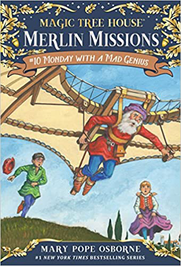
Monday with a Mad Genius. Mary Pope Osborne
Random House, 2007. Chapter book. 144 pages (3-6) A lively Magic Tree House time-travel adventure written with Mary Pope Osborne's usual verve. Jack and Annie visit the Renaissance, and meet Leonardo, who helps them in their quest to aid Merlin. (Now that's serious period-mixing.) Good additional reading, but not a morning read-aloud. |
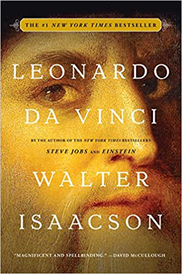
For Parents and Teachers
Leonardo da Vinci. Walter Isaacson. Simon and Schuster, 2018.
Renowned biographer of Benjamin Franklin, Albert Einstein, and Steve Jobs, brings his many talents to the Renaissance Man. An outstanding portrait of Leonardo's creativity, imagination, and sheer genius -- all set in the context of his times.
Leonardo da Vinci. Walter Isaacson. Simon and Schuster, 2018.
Renowned biographer of Benjamin Franklin, Albert Einstein, and Steve Jobs, brings his many talents to the Renaissance Man. An outstanding portrait of Leonardo's creativity, imagination, and sheer genius -- all set in the context of his times.
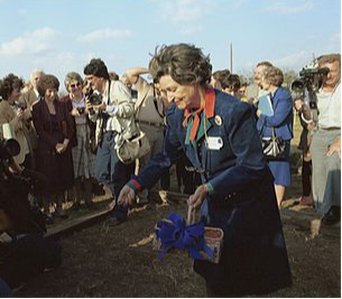 Lady Bird Johnson spreads seeds at the National Wildflower Research Center
Lady Bird Johnson spreads seeds at the National Wildflower Research Center
Stewardship - Lady Bird Johnson (1912-2007) Making America the Beautiful,
More Beautiful: One Wildflower at a Time
This month as we focus on gratitude, wonder, but especially “stewardship,” let’s celebrate an unsung heroine: Lady Bird Johnson. There was a time when our nation’s highways were flanked by rusted cars, discarded tires, and tacky billboards. At a time of sadness and division in the United States (after the assassination of President Kennedy and during the Vietnam War), America’s First Lady took steps to heal the country with the quiet power of beauty.
An only child, who lost her mother at age six, Claudia Alta Taylor (nicknamed “Lady Bird” by her nanny) found solace in the pine forest and wild flowers surrounding her rural home in East Texas. She clung to the memory of her mother holding a bouquet of bluebonnets, and eagerly awaited the first daffodil in spring. As a girl, she paddled alone in the dark bayous “where time itself seemed ringed around by silence and ancient cypress trees, rich in festoons of Spanish moss,” she wrote. Lady Bird fell in love with the fields of bluebonnets outside Austin where she attended college in 1930 (one of few women studying at the University of Texas). She earned degrees in History and Journalism, but never lost her love for nature. When she moved to the nation’s capital as the wife of Congressman Lyndon Baines Johnson, she was dismayed by the weed-choked shores of the Potomac and the concrete slabs that substituted for children’s parks. Every child should know the beauty of nature, she believed.
More Beautiful: One Wildflower at a Time
This month as we focus on gratitude, wonder, but especially “stewardship,” let’s celebrate an unsung heroine: Lady Bird Johnson. There was a time when our nation’s highways were flanked by rusted cars, discarded tires, and tacky billboards. At a time of sadness and division in the United States (after the assassination of President Kennedy and during the Vietnam War), America’s First Lady took steps to heal the country with the quiet power of beauty.
An only child, who lost her mother at age six, Claudia Alta Taylor (nicknamed “Lady Bird” by her nanny) found solace in the pine forest and wild flowers surrounding her rural home in East Texas. She clung to the memory of her mother holding a bouquet of bluebonnets, and eagerly awaited the first daffodil in spring. As a girl, she paddled alone in the dark bayous “where time itself seemed ringed around by silence and ancient cypress trees, rich in festoons of Spanish moss,” she wrote. Lady Bird fell in love with the fields of bluebonnets outside Austin where she attended college in 1930 (one of few women studying at the University of Texas). She earned degrees in History and Journalism, but never lost her love for nature. When she moved to the nation’s capital as the wife of Congressman Lyndon Baines Johnson, she was dismayed by the weed-choked shores of the Potomac and the concrete slabs that substituted for children’s parks. Every child should know the beauty of nature, she believed.

As First Lady, Mrs. Johnson stumped for her husband’s Civil Rights legislation, but she also embarked on a Capital Beautification project in Washington D.C., insisting that “where flowers bloom, so does hope.” Cherry trees and a million daffodils were planted along the banks of the Potomac, parks were made green, but the Highway Beautification Act, was her signature accomplishment. Commonly known as “Lady Bird’s Bill,” this landmark law limited the number of billboards on the nation’s highways, ensured removal of auto heaps and junk piles, and called for the planting of wildflowers. A steward of the environment, Lady Bird was responsible for making many of our national highways scenic roads.
Read more about her remarkable life and love affair with wild flowers – a passion that continued well after her retirement, when at age seventy, she founded the National Wildflower Research Center near Austin, Texas (since renamed the Lady Bird Johnson Wildflower Center).
Read more about her remarkable life and love affair with wild flowers – a passion that continued well after her retirement, when at age seventy, she founded the National Wildflower Research Center near Austin, Texas (since renamed the Lady Bird Johnson Wildflower Center).

Miss Lady Bird’s Wildflowers. How A First Lady Changed America. Kathy Appelt.
Illustrated by Joy Fisher Hein. Harper Collins, 2005. (2-5) Stewardship, Wonder
Vividly illustrated and beautifully told, this rich biography recounts Lady Bird’s lonely childhood, the void filled by flowers, and her life-long efforts to make nature’s beauty accessible to all Americans. Twelve varieties of wildflowers are illustrated at the book’s end (from bluebells and firewheels to purple horsemint and yellow American lotus) and students are invited to locate each on its pages.
Illustrated by Joy Fisher Hein. Harper Collins, 2005. (2-5) Stewardship, Wonder
Vividly illustrated and beautifully told, this rich biography recounts Lady Bird’s lonely childhood, the void filled by flowers, and her life-long efforts to make nature’s beauty accessible to all Americans. Twelve varieties of wildflowers are illustrated at the book’s end (from bluebells and firewheels to purple horsemint and yellow American lotus) and students are invited to locate each on its pages.
Vertical Divider
